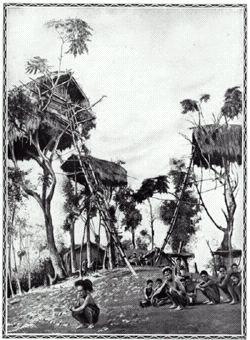i have been thinking about a lot of different stuff. i'm going to use the blog as a sounding board, but i promise, these thoughts are not uninteligible.
Boondoggled from http://www.geocities.com/SouthBeach/Cove/8286/wigwam.html, here is a description by Thomas Wildcat Alford (in his book "Civilization") of the housing of one of this area's former demographic groups, before the remnant bands:
"In building a wegiwa the bark was obtained by first severing it from the body of a tree as it stood, mostly from elm and birch....the bark was laid flat on level ground, with flesh side under, weighted down with small logs, and allowed to dry to a certain extent, but used while still soft and pliable. Then poles were cut of straight young trees and set into the ground at regular distances apart, outlining the size desired for the wegiwa. All bark was peeled off the poles to keep worms from working in it. Two of these poles with a fork at the top of each were set at opposite ends and at half way the length of the wegiwa. Upon these forks were laid the ends of a long pole...tied securely with rough bark. This formed the top comb of the roof, to which the rest of the poles were bent to a suitable height for the walls and firmly secured there with strips of bark. Then upon and across these were laid other poles at regular distances from the top comb, down the slope to the end of the roof, and on down the sides to form the walls. Upon these cross poles were laid the sheets of bark...securely held in place by other poles laid on the outside of the bark and tied fast to the poles within. The work seems intricate...but to a dexterous Indian woman...it was easily and quickly done."

at this point in time, the wegiwa seems impracticle for Cincinnati's city and suburb residents, and even for the rural residents. there just aren't enough humongous elm and birch trees for everyone. so what's a contemporary noble savage to do? a few months ago i showed you the wegiwa-inspired structure we tried at La Paz. it worked okay, but i want something better!
so i'd been thinking about wattle and daub as an appropriate technology for living space in this area, and searched and searched for some DIY wattle and daub resources at the library and on the net. no dice, until the reference librarian became interested, and found me this, via the papercrete site i posted about earlier this month:
IN STOCK: Survival Scrapbook #1 Shelter . by Stefan Szczelkun 1974. The wacky shelter book is printed in purple ink throughout, with the most amazing drawings and photos of unusual shelter concepts. It extensively covers domes and dome designs out or many mateials, even one PaperPod design that could be the forefunner of Papercrete! ALso shows how to convert buses and small trailers, wattle & daub, stone, log, turf, dugout, a Cinva Ram brick press design, soil cment making, and much more. This book is SO offbeat there are NO page numbers, but I estimate 100 pages, bibliography, 3 color cover. $25.00
if you can put your paws or flippers on it, just to read and take notes as i did, do. it was the shiz, as demonstrated by its inclusion of this New Guinean bachelor-style tree house:

anyway, traditional wattle and daub was sort of the forerunner to today's structurally insulated panels. according to my research, typically you'd begin by making a timber frame, in other words a skeleton to support the weight of the walls. these timber frames can vary greatly in their complexity. then you'd make panels of woven sticks, called wattles, which would then be covered up by and saturated with a "lime stabilized soil plaster". sounds easy. lime's just a byproduct of harvesting limestone. limestone isn't that hard to harvest on a small scale (I think) and is still done industrially, anyway, so not hard or expensive to come by. the rest of the plaster is just, like, clay, i think. so stay tuned, peanut gallery. this could be cincinnati's next evolution in housing! (not)


No comments:
Post a Comment